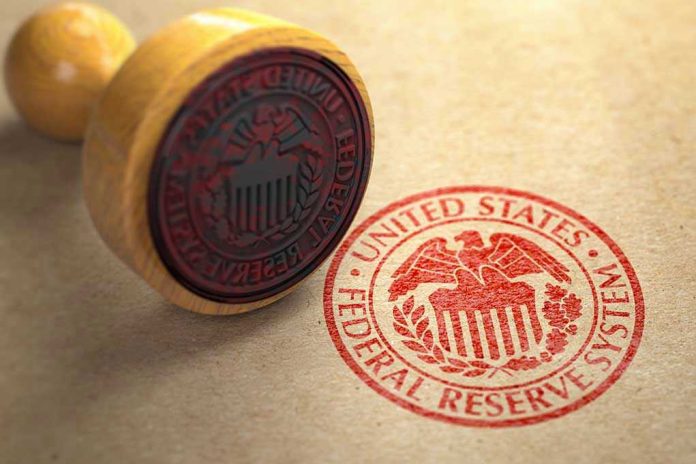
The Federal Reserve’s $2.5 billion headquarters renovation has exploded into a political firestorm, as Trump’s administration demands answers for what many see as yet another jaw-dropping example of government excess and lack of accountability, while Chair Jerome Powell scrambles to defend the project and his job.
At a Glance
- Federal Reserve’s renovation costs ballooned from $1.9 billion to $2.5 billion, sparking outrage from the Trump administration.
- President Trump and OMB Director Russell Vought publicly blasted Fed Chair Powell, raising questions about his leadership and even threatening his removal.
- Powell has now called for the Inspector General to investigate the project, as the battle over spending and central bank independence heats up.
- The controversy highlights deepening scrutiny over government spending, transparency, and the independence of the Federal Reserve.
Trump Administration Turns Up the Heat on Fed’s $2.5B Renovation
The Federal Reserve’s plan to overhaul its nearly century-old Washington, D.C. headquarters was supposed to be a necessary, if expensive, modernization. Instead, it has become a lightning rod for criticism, as renovation costs have surged to $2.5 billion. President Trump and his allies have seized on the ballooning price tag, blasting what they call blatant mismanagement and government waste. The project, which began with a $1.9 billion estimate before the pandemic, now stands as a symbol of the reckless spending that fed public anger during the Biden era and continues to stir outrage now.
This isn’t just about bricks and mortar. It’s about a central bank that answers to no one, spending taxpayer dollars like Monopoly money, while everyday Americans still feel the pain of inflation and economic uncertainty. With Trump back in the White House, the administration has made clear they won’t let this slide. The latest salvo came from OMB Director Russell Vought, who sent a sharply worded letter to Fed Chair Jerome Powell, demanding answers and warning that such financial mismanagement could be grounds for Powell’s removal. The administration’s message is unmistakable: the era of runaway spending and zero accountability is over.
Powell Scrambles as IG Investigation Launched
Jerome Powell, under withering attack from both the White House and conservative lawmakers, has scrambled to defend the renovation. After repeated public rebukes—culminating in Vought’s letter—Powell announced he was requesting the Federal Reserve’s Inspector General, Michael Horowitz, to launch a formal review of the project. The move is a clear attempt to stem the political bleeding and reassure both Congress and the public that the central bank can police its own. But critics say it’s too little, too late. The costs are already out of control, and the lack of transparency is precisely what frustrates taxpayers who have watched their own budgets shrink while government projects balloon out of control.
The Fed, for its part, has published explanations defending the necessity of the renovations, citing safety, accessibility, and the need to modernize aging infrastructure. But those explanations have done little to quiet the uproar. The Trump administration continues to question whether the project’s scope and spiraling costs are justified, and the suggestion that Powell’s job could be on the line is now very real. With the Inspector General’s review pending and the project far from complete, the standoff between the White House and the Fed shows no sign of cooling down.
Political and Economic Fallout: Independence at Risk?
This controversy strikes at the heart of a much bigger debate: who holds the Federal Reserve accountable? The idea of using administrative blunders as a pretext to challenge the independence of the central bank is unprecedented in recent history. Yet, for many conservatives, it’s a long-overdue check on an institution that has operated with far too little oversight for far too long. Trump’s aggressive posture reflects a growing frustration with unelected bureaucrats who spend big and answer to no one, all while Main Street Americans are left holding the bag.
Financial markets are watching closely. Any sign that Fed leadership might change—especially for reasons other than monetary policy—injects new uncertainty into an already volatile economic environment. For taxpayers, the message is simple: enough is enough. The Federal Reserve’s leadership must answer for how nearly a billion dollars in extra costs materialized, and whether the institution is truly serving the public’s interest or its own. As the Inspector General’s investigation unfolds, the outcome could reshape not just the future of the Fed, but the entire principle of central bank independence in America.






